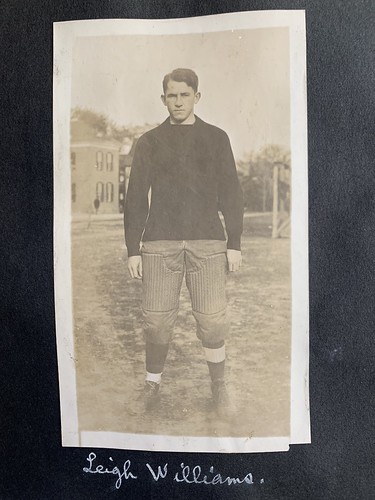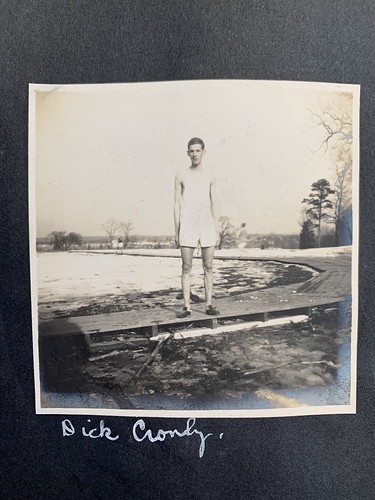Over There: Selected Stories of the War
“God Bless the E.H.S. and Overthere are the favorite songs… Wilson and Pershing are the favorite public characters.” -- Whisper, 1917-1918
Over the course of the war, 82 Episcopal students and faculties, as well as 461 alumni served in the military, according to the estimation in the Story of a Southern School: The Episcopal High School of Virginia. Out of the 461 alumni in the military, 233 served as officers in the army and navy. Unfortunately, the sheer number of Episcopal community members involved in the war makes it impossible to tell the story of each one of them, within the limited scope of this project. By covering the stories of some individuals, this page aims to show the overall vast and varied involvement of Episcopal alumni in the battlefield.
Honor in Action
During the war, numerous alumni won recognitions in the military. According the Story of a Southern School, one received the Distinguished Service Medal and three received the Distinguished Service Cross; Four were awarded the Legion of Honor, and further ten with Croix de Guerre; one won the Distinguished Conduct Medal and one the Legion Etoile Noire; finally, one alumnus received the Montenegrin medal of war. In addition to these decorations, many alumni received Gallantry Citations. Here are several examples of the honor in action.
John Newport Greene ’08 was one of the first three Americans to receive the American Military Cross for extraordinary heroism. Initially volunteering as an ambulance driver, Green later served alongside the French Army for six months before being transferred to the American Expeditionary Force as a Captain in the 6th Field Artillery. In early 1918, Greene was wounded in a dugout on both legs by an enemy hand grenade. Yet, refusing to surrender, he shot a German soldier swarming in and drove the enemy squad out of the trench.
One of the first Episcopal alumni to receive Croix de Guerre, Peter Upton Muir ’17 was not a soldier, but an ambulance driver for S.S.U. 517 of the American Field Service. His calmness and bravery in driving a group of wounded soldiers in pitch darkness won him the honor.
John Campbell Greenway ’90 had a long and distinguished military career. After graduating, he attended University of Virginia and Yale, before joining the military during the War of 1898. In his famous book, The Rough Riders, Theodore Roosevelt described Greenway as “a strapping fellow, entirely fearless, modest and quiet, with the ability to take care of the men under him so as to bring them to the highest point of soldierly perfection.” During the Great War, Greenway served as a Major in the Engineer Corps, before leading the 101st Infantry as a Lieutenant-colonel. Greenway fought in significant battles at Cantigny, Château-Thierry, and St.-Mihiel. During the Battle of Cambrai, he was cited for gallantry, and he was later awarded by French government the Croix de Guerre, the Legion of Honor, and the Ordre de l'Étoile Noire for leading the 101st Infantry Regiment during the Meuse-Argonne Offensive. He also received a Distinguished Service Cross and the World War I Victory Medal.
Geographic Diversity
Before They were Soldiers
Left--Lucien D. Burnett: he served as a Private of the AEF at Base Hospital 41 during the war.
Right--Conway W. Cooke: he became a Captain in the 317th Infantry, 80th Division, before being promoted to the position of Major.
Left--Francis O. Roller: he became a Second Lieutenant of the 313th Machine Gun Battalion, 80th Division, AEF, before being wounded in action during the Meuse-Argonne Offensive.
Right--Leigh D. Williams: he was a Second Lieutenant of Field Artillery assigned to Fort Sill.
Left--Charles Lunsford: he became a Second Lieutenant of Field Artillery and a member of the 104th Ammunition Train and Field Artillery Replacement.
Right--Robert D. Cronly Jr.: after graduating from Episcopal, he attended University of Virginia and became a First Lieutenant of 81st Division, AEF during the war.








